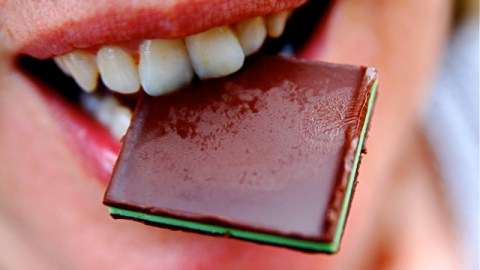What Is Taste?

Taste is both a sense and a preference; a gustatory pleasure and a social inquiry of what’s beautiful, proper, unique and stylish. What is taste on a neurological level and why is it that so many people find some tasty foods and tasteful combinations to be so appealing—and others disgusting?
As Columbia University neurobiologist Professor Stuart Firestein explains in his Big Think interview, there is a difference between taste and flavor: “Taste really refers to four, really five I suppose, sensitivities and that’s sweet, sour, salt, bitter—the four well known ones—and a relatively new taste sensation called umami,” says Firestein. Flavor, on the other hand—or what we refer to when we say something tastes good or bad—is a different animal altogether. “Flavor is what we call a hedonic sense in that it is really a combination of several different senses, the five tastes, but also in a very important contribution from your olfactory or smell system. In fact, it’s estimated that about 85% of what we perceive of as flavor is really olfactory,” he explains.
It is clear that humans have a very discriminating palate compared to other animals. This is largely because the process by which we chew releases the odor molecules of our food through our retro-nasal pathway, sending them directly to neurons in the back of our nose. Unlike our other senses, which are typically transferred through our brain’s thalamus before being sorted, standardized, and diverted to specialized areas of our cortex, there are only two synapses between the sensory neurons in our nose and the highest levels of our brain.
Yet why we find that some things taste good and others do not, continues to mystify scientists. “There are some things that seem to just simply disgust us in a very, very instinctive deep kind of way that seems to be built into the organism and there are other things that we clearly learn to find either good or bad,” says Firestein. “It’s one of those kind of interesting interdisciplinary kind of places where people of all sorts of stripes are interested.”
Another mystery regarding our sense of taste that continues to confound the scientific community is that of the so called Proustian experience — or taste and smell’s curious ability to conjure both good and bad memories. “One of the things we can note about those memories is they’re always emotionally latent somehow or another. You don’t smell something and remember a page of text or an equation or a phone number or something useful like that. You always remember something like grandma’s living room, the first day of school,” says Firestein. “The other is that they are long lasting. We recall things from many, many years ago and they’re extremely vivid.”
Firestein’s interview leads off the beginning of What Is Taste?, a new Big Think video interview series comprising the thoughts of top taste-makers on what constitutes both good and bad taste, in both a gustatory and sociological sense.
Image courtesy of Flickr user stevendepolo.





